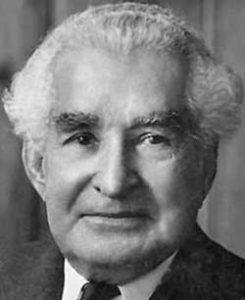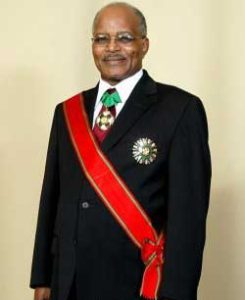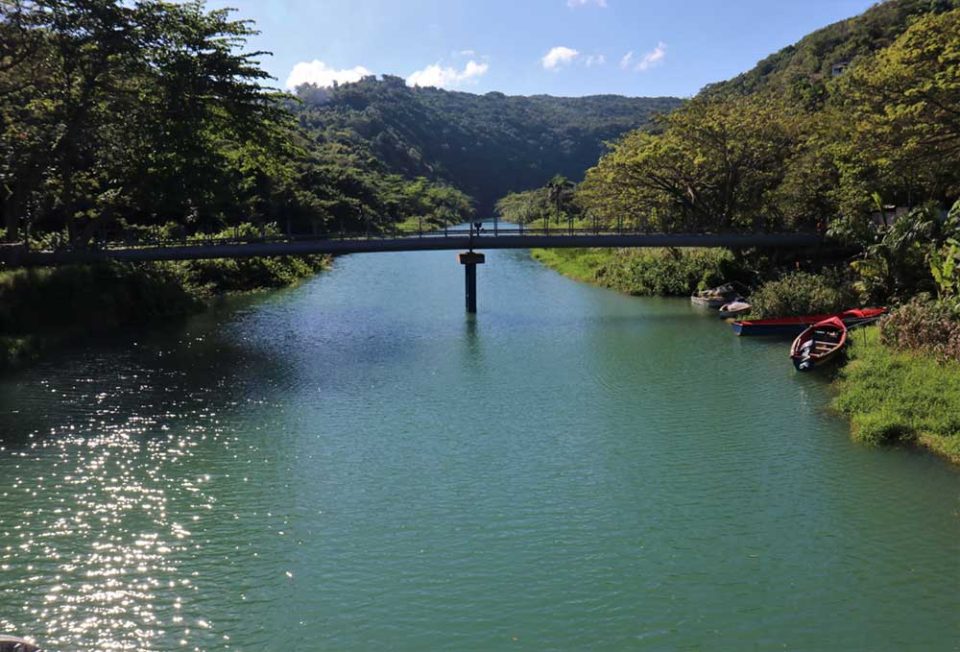Although Hanover is the smallest parish in Jamaica –second only to Kingston in geographical size, it is one of the most fascinating , boasting a variety of unusual features as well as a colourful history. The parish which was established in 1823 got its name in honour of King George the First who was a member of the German House of Hanover. However the origin of its capital Lucea’s name is less clear. It is thought the town was named after St Lucia with which there is an interesting connection as we shall later see.
Located in the county of Cornwall on the north-east tip of the island, Hanover could be described today as the ‘forgotton’ parish of Jamaica. Yet the parish is one of the most picturesque in the island with its western coast being indented by numerous charming little bays and coves and the gently sloping Dolphin Head mountain range.But more than that Hanover has the distinction of being the birthplace of some of the most celebrated Jamaicans. How many parishes can boast of giving Jamaica a National Hero who was also a Prime Ministers in the Rt. Excellent Sir Alexander Bustamante born in Blenheim in the parish; a Head of State in former Governor General, Sir Kenneth Hall; and Merlene Ottey arguably Jamaica’s greatest female athlete?



Hanover also boasts some of the finest beaches and the most elegant hotels in the country . Think of Round Hill, the site of the Ralph Lauren’s vacation home or of Prince Harry’s exclusive private parties or the world famous Tryall Golf and Country Club with its only remaining sugar estate waterwheel. (Photo)Further west, the famous Negril strip actually begins in Hanover and houses such resorts as Riu, Grand Lido etc.
DID YOU KNOW?
[bs-quote quote=”Lucea, the capital gave its name to one of Jamaica’s most famous yams (photo of lucea yam). In the years when thousands of Jamaicans migrated to Cuba and countries in Central and South America to work on banana plantations and to help build the Panama Canal, lucea yam was a major export to those Jamaicans. In the 18th and 19th centuries, the Parish was also home to numerous sugar estates – many more at the time than its neighbouring parish of St. James.
The Lucea town clock is known for its unique architectural design with a tower modeled after the helmet worn by the Royal Guards of Germany. Located on the 19th century courthouse building in the town square, the clock was originally ordered by and intended for delivery to the island of St. Lucia but was delivered in error to Lucea in Hanover, Jamaica! The townspeople not only refused to exchange it for the more modest one they ordered, but paid the difference for the more expensive one by public subscription
Ruseas High School is one of the oldest in Jamaica. Founded in 1777, it was given as a gift by a French refugee William Rusea in gratitude for the hospitality shown to him on his arrival and settlement in Jamaica. However, it is not the oldest building in the parish; that distinction belongs to the Anglican church (Photo)
Both Ruseas School and the Anglican Church share an interesting connection with Fort Charlotte another famous Lucea landmark. The school itself was part of the Fort and popular myth has it that a tunnel ran from the Church some 400 metres to the Fort. The fort itself, named in honour of George the Third’s queen was one of 12 built in the 18th century to protect the island’s harbours. It has been declared a national monument by the Jamaica National Heritage Trust (JNHT) and its battlements remain in good repair (Scan aerial photo of Fort Charlotte showing Ruseas from Historic Jamaica from the Air). ” style=”style-7″ align=”center” color=”#dd3333″][/bs-quote]
So what is there to do in the parish of Hanover?
There are no shortage of places to stay; from the ultra luxurious Round Hill to the newest all-inclusive in the parish, the Grand Palladium, the choice becomes almost endless when to these are added the full range of small inns, cottages, guest houses and the large chain all- inclusives along the Negril strip.
Lucea town with Fort Charlotte, its picturesque harbour, the town square and its Anglican church is an attractive option for the historically-minded. The church yard itself is home to a number of monuments to interesting persons like John Costello publisher of the Falmouth Post who was instrumental in creating the Rose Hall legend. Walter Jekyll the author of Jamaica Song and Story is also buried there.
Blenheim, the birthplace of National Hero Sir Alexander Bustamante has been restored by the JNHT and provides an educational experience for school groups and individual visitors.
A leisurely drive along the coastline will take the traveler past Hopewell ,Sandy Bay, Mosquito Cove, Lucea on to Orange Cove which left an 18th century historian speechless, declaring it ‘beautiful beyond description’, to the quaint town of Green Island and finally to Negril. (Other attractions can be added including reader suggestions)


